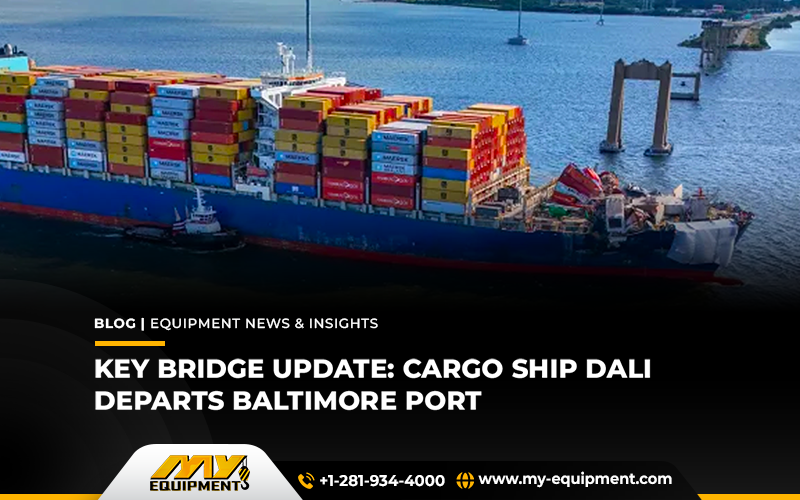A major update finally came from the port of Baltimore. The U.S. Coast Guard from Baltimore to Norfolk, Virginia has finally confirmed that the cargo ship Dali has left port on June 24. It is exactly three months since the incident happened. The recovery of the collapsed Francis Scott Key Bridge and cleaning of the port were rapidly moving, finally making it possible to release the Dali ship.
The incident recap
The collapse incident was reported on March 26, when the Key Bridge collapsed by the striking of a large cargo ship Dali. It caused a catastrophe that blocked the port instantly. When the Dali struck the bridge, a crucial steel tie structure that spans 1.7 miles across the Patapsco River, it suddenly collapsed. All activities at the Port of Baltimore were suspended as a result of this mishap, and the ship and its crew were stuck beneath the debris until June 10. Continuous and sudden action took place to clean and clear the port by hiring large cranes and other equipment. The focus was to open the port for traffic as soon as possible. The supply chain between the regions was badly affected by this incident.
Planning to rebuild the bridge
Now that the debris has been removed and port operations are back to normal, the focus is on repairing the Key Bridge. Before it collapsed, this bridge was an essential part of the infrastructure, which was transporting an average of 31,000 vehicles per day. The Maryland Transportation Authority (MDTA) is currently concentrating on obtaining money and making plans for the new bridge in collaboration with federal and state officials.
It is the commitment of President Joe Biden to secure federal funding for the project. On May 31, the MDTA published a request for proposals (RFP) for design-build teams, with a June 24 deadline. Further, it is expected that this summer will see the design-build team selected, and that work will start in the fall along with the completed by late this year.
Does community participation impact the planning process?
Input from the community is an important part of the planning process. In order to get opinions regarding the new bridge from locals and stakeholders, MDTA is surveying them. The early estimation says the replacement project with roughly cost $2 billion. The 10% cost-share requirement for federal emergency relief funding designated for disaster-damaged roadways and bridges is intended to be eliminated by the Baltimore BRIDGE Relief Act, which was filed in the U.S. Senate and House in April.
Creative Design Ideas
The Italian-based Webuild Group, via its American subsidiary Lane Construction, presented a preliminary design for a replacement bridge among the ideas received prior to the RFP. Their construction ensures that larger ships can safely pass the port with the help of a cable-stayed span that can sustain major impacts. The strength of the building will be able to carry heavier traffic load whereas the high-rise bridge will open more space to pass the larger cargo ships carrying heavy construction equipment through the port. The new Key Bridge will rise to a height of 213 feet, thirty feet higher than the existing one. Compared to the present bridge, it will have a primary span that is 1,100 feet longer at 2,300 feet. There will be an extra lane in each direction to handle the additional traffic volume.
The cleaning process is still in operation
The collapsed building is still being cleaned up while plans for the new bridge are being developed. Skanska is in charge of the debris removal and disposal as part of a $50 million contract with MDTA. By July, they hope to have finished their work at the location of the five collapsed spans, making the region secure and prepared for the upcoming building.
A closure
In the wake of the Key Bridge catastrophe, Dali’s departure represents a major advancement. The emphasis is still on community input, creative design, and collecting the required money to guarantee the new bridge satisfies current standards and future expectations as Maryland and federal leaders collaborate to repair this vital asset. When the Key Bridge is successfully replaced, Baltimore and the surrounding areas will once again have access to a key link that supports both regional and national economic activity.


 1400 Broadfield Blvd, Houston, TX 77084,
USA.
1400 Broadfield Blvd, Houston, TX 77084,
USA.